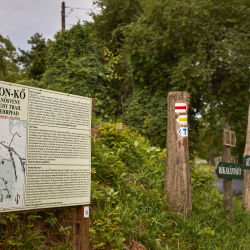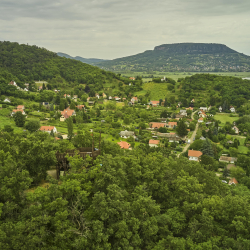
8261 Badacsonytomaj-Badacsony, Park u. 20. •
+36 87 531 013 •
badacsonytomaj@tourinform.hu
Szigliget

Szigliget is truly the most atmospheric small villages jewel box of the Balaton Uplands is Szigliget and the group of hills surrounding the village. Special volcanic activity has shaped and formed the surface of the area. In addition to its geological curiosities, Szigliget has almost a 6000 years old history. Its two castles have experienced exciting events in the past, and the village has a rich ethnography and a wealth of motifs, as it has been inhabited by a true vineyard society over the centuries.
Jenő Cholnoky, a well-known Hungarian geologist called the mountains of Szigliget "the mounds of Szigliget". The area was formed by a series of dramatic explosions. Rocks were ejected from more than 1 km below the surface, creating the maar formations. There were three eruptive centres in the area and these rings coalesced here. These are Soponya Hill, Antal Hill and the Castle Hill. On the Castle Hill a very small magma deposit is observed, apart from that there are no magmatic rocks in the area, only pyroclastites. This phreatomagmatic activity took place here about 4 million years ago. The Kamon Stone Nature Trail shows the geological, zoological and botanical values of the area. There are two castles in the area of Szigliget, the Castle known by everyone and the younger fortress, known as the Old Castle (Óvár). The area of Szigliget has been inhabited for thousands of years, and finds from almost every historical era since the Bronze Age have been found. In the Árpád period there were two settlements here, and between 1260-62 the oldest part of the castle was built on the top of the castle hill. Szigliget has never been an island in the classical sense of the word, as evidenced by the traces of settlements from different periods excavated in the area, not to mention the vineyards that have been cultivated for more than 2,000 years.




